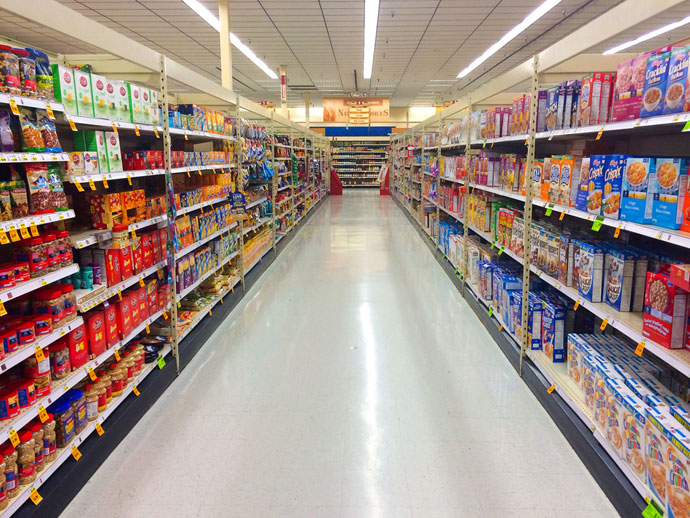See How The Big Brand-Name Companies Are Making The Grocery Store Their Monopoly Game (Infographic)
A 2013 study by the U.S. consumer-rights group Food and Water Watch shows consumers’ money is going to surprising and somewhat disturbing places at the grocery store. According to the study, there are only two to four main players in the grocery game.
The study examined 100 types of grocery products and found that there were only a few companies dominating the sale of each grocery item. The strategy: Companies sell multiple brands of the same product creating “competitors” and lead consumers to believe they are choosing from different brands, all the while funneling sales back to the same source.
For example, brands like I Can’t Believe It’s Not Butter!, Shedd’s Country Crock, Imperial, Promise and Brummel & Brown are all seemingly competitors in the margarine industry, but they’re all owned by Unilever. The company also owns skincare and hair-care brands like Dove, St.Ives, Pond’s, Simple and VO5. So not only do these companies control individual grocery categories, but they are also finding ways to expand their reach by controlling the sales of products outside of their core brands. The end result is that four or fewer companies control 75 percent of sales in 32 of the 100 grocery categories studied and 90 percent of sales in six categories.
So what are the big, bad companies that make up the elite crew in the grocery monopoly game? Ranked in the order of how many grocery categories they reach—owning brands that make everything from cheese products to Asian foods—they are:
1. Kraft (22 categories)
2. Pepsi Co. (20 categories)
3. ConAgra Foods (19 categories)
4. Nestle (19 categories)
5. General Mills (17 categories)
6. Campbell’s (13 categories)
An infographic posted on Financesonline.com highlights more key findings from the Food and Water Watch study below.
Comparisons by Martin Glover | Our LinkedIn











































